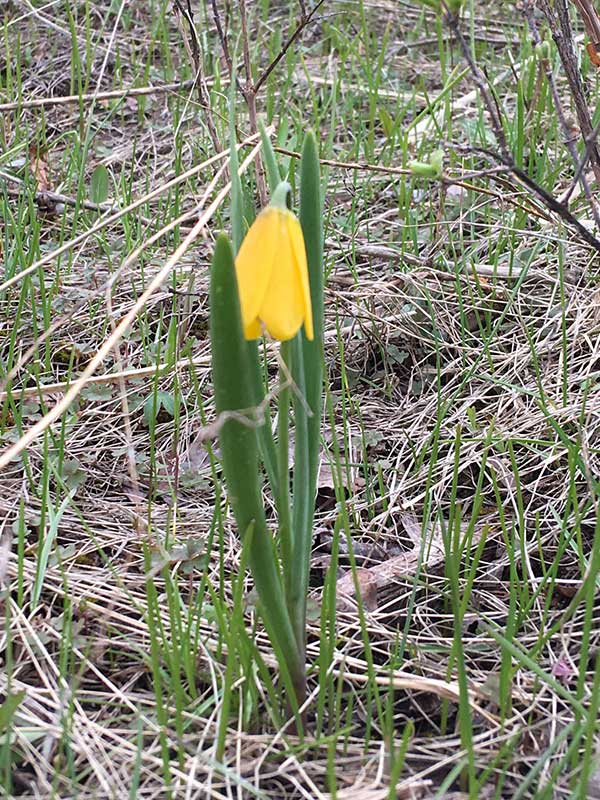Fritillaria pudica / yellow bells
- small, lovely, unprepossessing lily
- a few, long, narrow leaves
- a single (or two) yellow, bell-shaped flower
- flowers turn brick red as they age
- blooms just after snowmelt and disappears quickly
Also known as: yellow fritillary, yellow mission bells
Fritillaria pudica is a charming, spring ephemeral member of the lily family. It can be mistaken for no other and nothing else looks like it. However, it makes only a brief appearance in the spring, right around snow melt. If you see it, smile now because you might not be able to find it again next week. And don’t necessarily expect to see it flower in the same place next year; they have been described as “shy flowering”. But when they do flower …
Yellow bell flowers have a single (sometimes 2), clear yellow, hanging (nodding) bell-like flower at the top of a single flower stalk. The bell is made of 6 tepals and as it ages, it turns a brick-red color and begins to curl outward. Each flower has both male and female organs and is insect pollinated. The fruit is a small capsule that matures later in the summer. The individual seeds weigh only about 2 mg.
The leaves of yellow bells are like you would expect for a lily, albeit a small one… long and linear. The plant has a small bulb, about a half-inch diameter. Most of the propagation is by seeds which mature quickly after pollination occurs. It also spreads slowly from the bulbs.
Yellow bells may be found in grasslands, scattered among sagebrush, or on the needled ground beneath ponderosa pines or in mixed coniferous forests. It prefers moist springs and dry summers.
| Color | |
|---|---|
| Family | |
| Inflorescence size | |
| Inflorescence type | |
| When? | |
| Where? |





